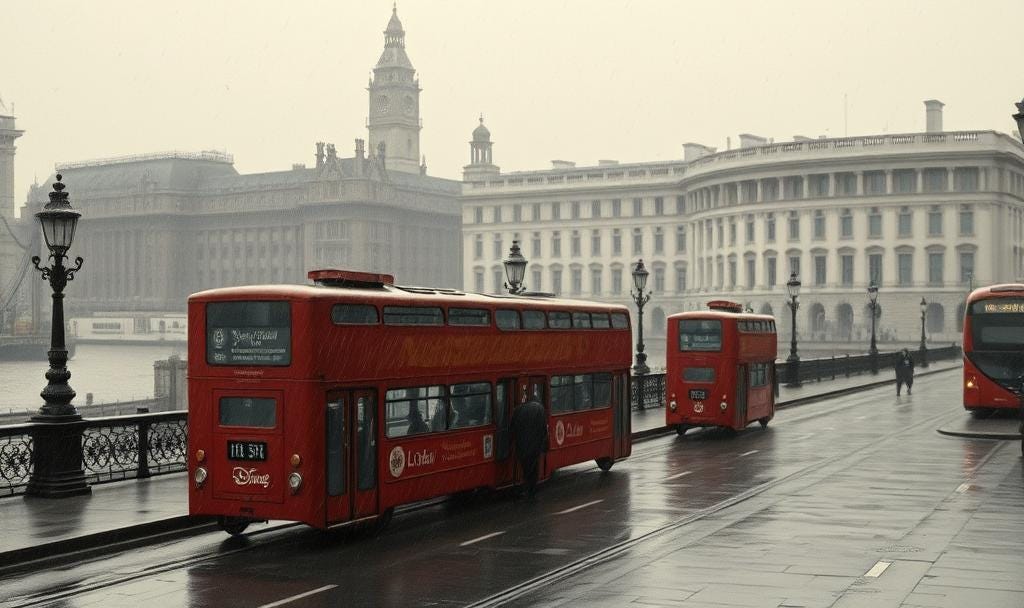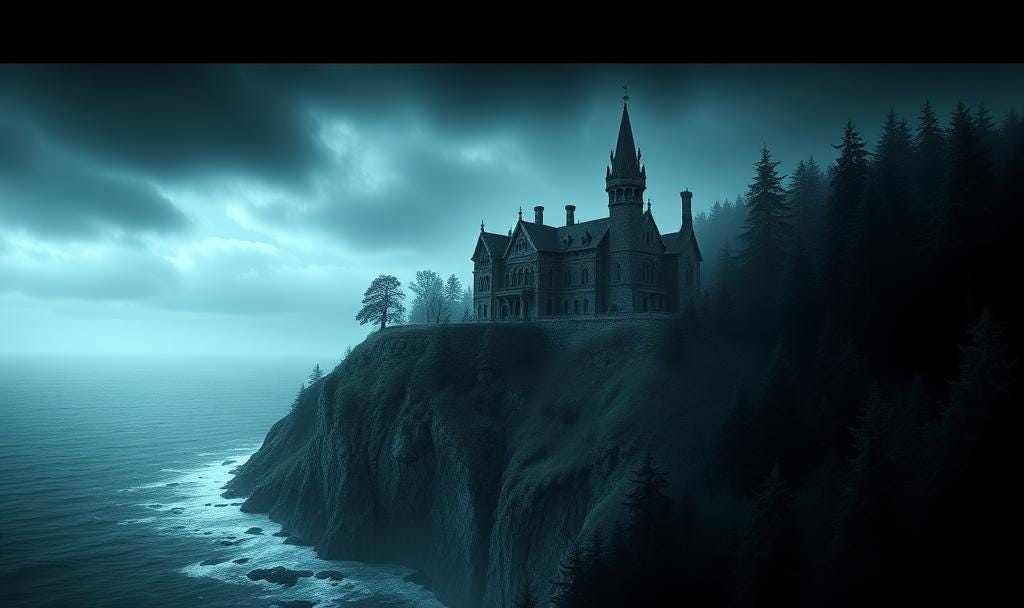There is something quite fascinating about a rainy day. The sky darkens, the world hushes; and as we watch the drops bead against a window or get caught in a sudden downpour, we feel—something. Nostalgia, melancholy, clarity. Rain brings the inside out. And nowhere is this turmoil more forcefully captured than in literature.
Rain has long served as more than meteorology in stories; it is emotional weather. Readers know that when it rains, something inside the characters shifts.
Rain as inner turmoil
In Charlotte Brontë’s Jane Eyre, the famous storm that splits the chestnut tree after Mr. Rochester’s proposal is as symbolic as it is atmospheric. Rain lashes at the world just as Jane's heart is caught in a whirl of passion and doubt. The external storm mirrors the emotional one. And this, of course, is what the best fiction does—it ties the landscape to the soul.
“It was not without a certain wild pleasure I ran before the wind, delivering my trouble of mind to the measureless air-torrent thundering through space. Descending the laurel walk, I faced the wreck of the chestnut-tree; it stood up black and riven: the trunk, split down the centre, gasped ghastly. The cloven halves were not broken from each other, for the firm base and strong roots kept them unsundered below; though community of vitality was destroyed—the sap could flow no more: their great boughs on each side were dead, and next winter’s tempests would be sure to fell one or both to earth: as yet, however, they might be said to form one tree—a ruin, but an entire ruin.”
(Jane Eyre, Charlotte Brontë)
In the example above, the wind becomes an external force powerful enough to contain Jane’s anguish, and her “wild pleasure” in the act of running suggests an emotional liberation. As she encounters the chestnut tree, split in two by the same storm under which Rochester proposed, the anthropomorphized tree turns into a visual embodiment of her emotional state: wounded, shocked, but still standing.
In addition to Charlotte (and her Brontë sisters), Virginia Woolf was, too, intensely attuned to emotional landscape. In Mrs. Dalloway, Clarissa walks through a drizzling London; the rain is not oppressive but luminous, almost shimmering with memory and reverie. Rain here becomes a veil between past and present, between the seen and the felt.
“Ah dear, she remembered—it was Wednesday in Brook Street. Those kind good fellows, Richard Dalloway, Hugh Whitbread, had gone this hot day through the streets whose growl came up to her lying on the sofa. Power was hers, position, income. She had lived in the forefront of her time. She had had good friends; known the ablest men of her day. Murmuring London flowed up to her, and her hand, lying on the sofa back, curled upon some imaginary baton such as her grandfathers might have held, holding which she seemed, drowsy and heavy, to be commanding battalions marching to Canada, and those good fellows walking across London, that territory of theirs, that little bit of carpet, Mayfair.
And they went further and further from her, being attached to her by a thin thread (since they had lunched with her) which would stretch and stretch, get thinner and thinner as they walked across London; as if one’s friends were attached to one’s body, after lunching with them, by a thin thread, which (as she dozed there) became hazy with the sound of bells, striking the hour or ringing to service, as a single spider’s thread is blotted with rain-drops, and, burdened, sags down. So she slept.”
(Mrs. Dalloway, Virginia Woolf)
Here, Woolf combines interior consciousness with the sensory world, using rain as a metaphor to explore the fragility of human connection and the passage of time. As Clarissa lies on the sofa, the memory of her social world (full of power, prestige, and notable acquaintances) drifts into a dreamlike haze. The sounds of the city rise up to her like a tide, and her curled hand imagines a baton of command, linking her to a past of inherited authority and imagined imperial power. Yet, even in this reverie of control, the present slips away.
Woolf creates this interesting metaphor of a "thin thread" connecting people—delicate, tensile, easily broken. This imagery culminates in the haunting image of a spider’s silk sagging under the weight of raindrops: the sorrowful beauty of connection, the burdened thread of human intimacy that is suspended between memory, moment, and melancholy sleep.
Emotional landscape
There is an important distinction between setting and atmosphere in literary studies. Setting refers to where and when a story takes place; for instance, A Sicilian Romance, by Ann Radcliffe, is set in the castle of the Mazzini family in sixteenth-century Sicily. The atmosphere, however, takes into account the mood, how the setting affects the sensibility of the characters. Setting is quite objective; whereas atmosphere is a subjective experience—for the characters and the reader.
The description of the atmospheric setting in a literary text is what I call emotional landscape. Look at the following extract:
“The castle of Mazzini was a large irregular fabrick, and seemed suited to receive a numerous train of followers, such as, in those days, served the nobility, either in the splendour of peace, or the turbulence of war. Its present family inhabited only a small part of it; and even this part appeared forlorn and almost desolate from the spaciousness of the apartments, and the length of the galleries which led to them. A melancholy stillness reigned through the halls, and the silence of the courts, which were shaded by high turrets, was for many hours together undisturbed by the sound of any foot-step. Julia, who discovered an early taste for books, loved to retire in an evening to a small closet in which she had collected her favorite authors. This room formed the western angle of the castle: one of its windows looked upon the sea, beyond which was faintly seen, skirting the horizon, the dark rocky coast of Calabria; the other opened towards a part of the castle, and afforded a prospect of the neighbouring woods.”
(A Sicilian Romance, Ann Radcliffe)
You can see how Radcliffe transforms the setting into a powerful atmospheric device by infusing the castle and its surroundings with mood and psychological tension. The vast, decaying architecture becomes a symbol of emotional desolation and faded grandeur, its empty halls and silent corridors evoking a sense of haunting stillness. The isolation of the characters is reflected in the spatial emptiness, where the sheer scale of the building intensifies feelings of loneliness and entrapment. Natural elements glimpsed through windows—stormy seas, dark coasts, shadowy woods—reinforce the sense of foreboding, suggesting both beauty and danger beyond the confines of the castle. Radcliffe’s setting does not merely house the action; it shapes it, projecting unease, amplifying suspense, and immersing the reader in a world where emotion and environment are inseparably entwined. And, yes, it is quite Gothic.
Let’s return to rain. As part of emotional landscape, rain fall is not only an atmospheric backdrop in A Sicilian Romance, but a vital element in Radcliffe’s evocation of the sublime, a Romantic aesthetic that blends awe, terror, and beauty. Radcliffe often stages rainstorms amid dramatic landscapes, where characters are dwarfed by nature’s overwhelming power. One striking moment occurs when Julia flees the castle and is caught in a tempest:
“The evening shut in suddenly; the rising wind, the heavy clouds that loaded the atmosphere, and the thunder which murmured afar off terrified Julia, and threatened a violent storm.
The tempest came on, and the captain vainly sounded for anchorage: it was deep sea, and the vessel drove furiously before the wind. The darkness was interrupted only at intervals, by the broad expanse of vivid lightnings, which quivered upon the waters, and disclosing the horrible gaspings of the waves, served to render the succeeding darkness more awful. The thunder, which burst in tremendous crashes above, the loud roar of the waves below, the noise of the sailors, and the sudden cracks and groanings of the vessel conspired to heighten the tremendous sublimity of the scene.
(A Sicilian Romance, Ann Radcliffe)
This passage—one of my favourites in the novel!— is rich in sublime imagery: the darkness, the violent storm, the howling wind… all combine to evoke feelings of vulnerability and awe. Radcliffe uses the storm not only to heighten tension but to externalize Julia’s emotional turmoil; the wildness of the natural world reflects her psychological state as she escapes tyranny and seeks freedom.
Rain in A Sicilian Romance also creates a space where reason and order dissolve into mystery and sensation. In typical Gothic fashion, Radcliffe uses rain to blur the line between the known and the unknown. The storm disorients the characters and readers alike, plunging them into a realm where rational explanations falter. The sublime experience evoked by the rain—the feeling of standing at the edge of something vast, beautiful, and terrifying—mirrors the novel’s recurring themes: imprisonment versus liberty, patriarchy versus individual will, and reality versus illusion. By embedding rain within these sublime landscapes, Radcliffe transforms meteorological detail into a powerful Gothic device, where emotion is amplified and the natural world becomes a participant in the drama of the human soul.
What Rain Means to Us Readers
As readers, we’re often most drawn to stories that match our emotional landscape. On a gray afternoon, I don’t normally reach for sun-drenched tales; instead, I turn to the misty, the moody, the quiet. Rain invites introspection, both in fiction and in life.
There’s comfort in reading about rain. It slows time. It makes room for thought. In literature, rain rarely arrives without purpose. It signals change. It brings catharsis. It gives us space to feel.
So maybe that’s why we reach for rainy tales when the sky darkens. These stories (the good ones) demonstrate that rain isn’t just background.
So, here is to a rainy afternoon accompanied by a good book and a cup of coffee!







I loved this! And have vowed to read A Sicilian Romance. Jane Eyre, of course, is an old friend, as is the riven tree and all it symbolizes.:-)
i absolutely LOVE these kinds of compilation posts! and i’ve been looking for a reason to read Dalloway, and i think this is my push to do so. adding A Sicilian Romance to my TBR as well! thanks for this!!